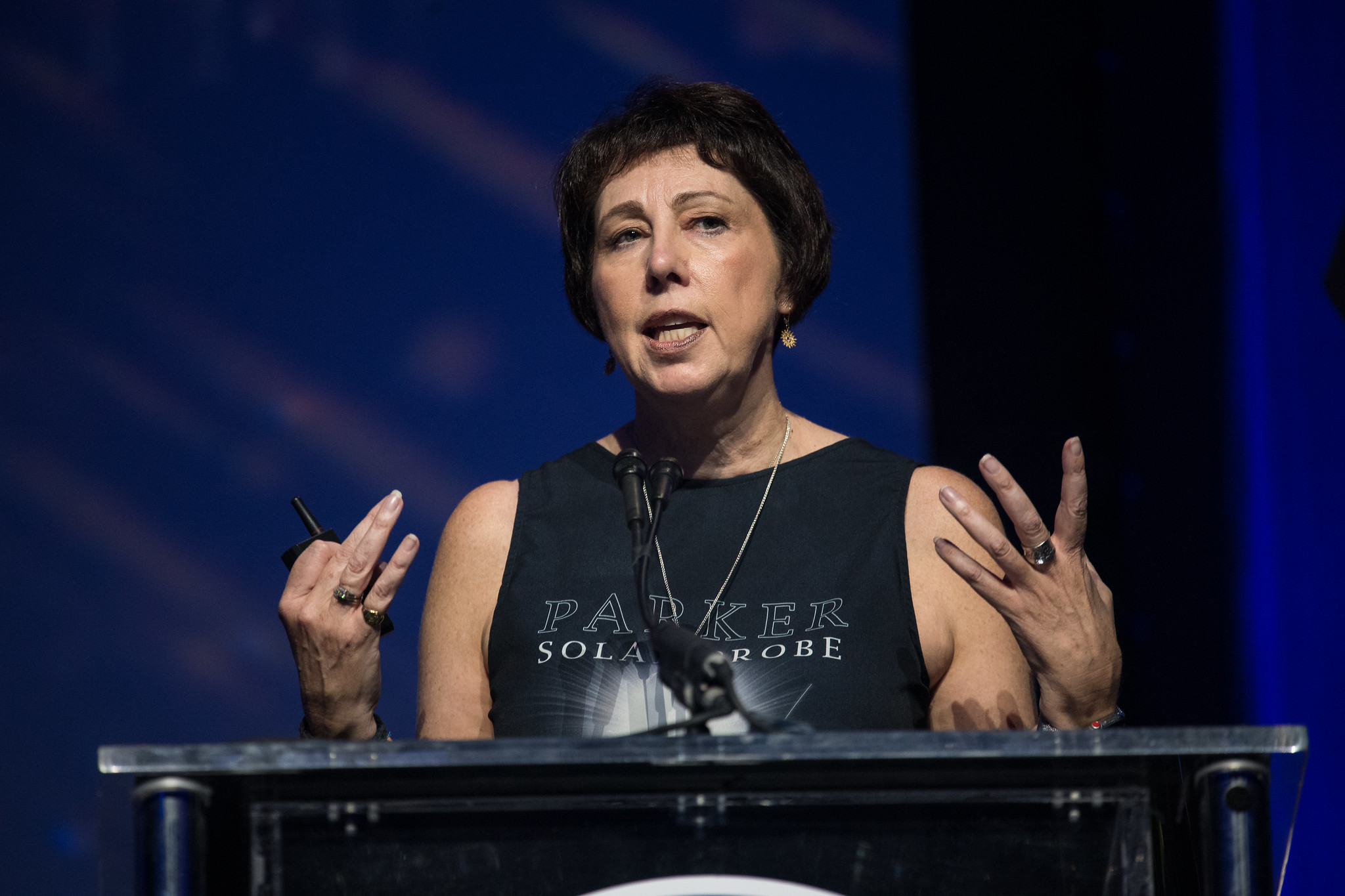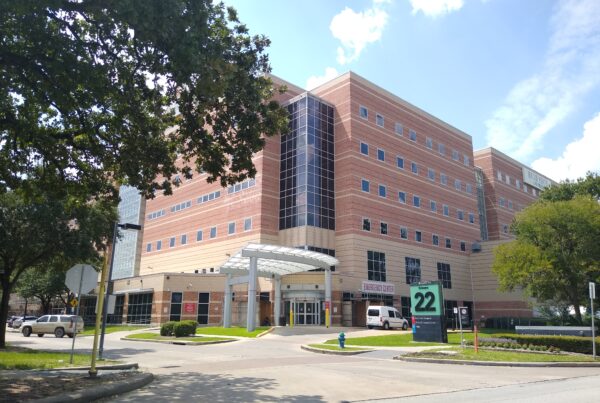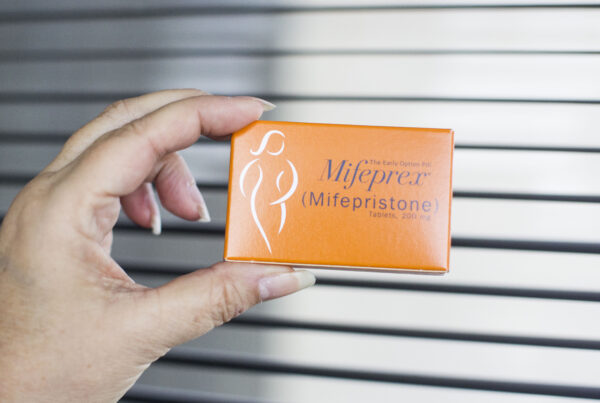Dr. Nicola Fox has what she describes at the best job on the planet: Last month she was named NASA’s head of science – a role that’s responsible for a $7.8 billion budget and more than 100 missions, including the exploration of distant galaxies.
Fox, who is the first Briton and only the second woman to be named top scientist in NASA’s 65-year history, grew up in a small English market town where, she recently said, “you don’t really dream of working for NASA; it certainly doesn’t seem like it’s something that could be a reality.”
Fox told Texas Standard that she had her first encounter with space at a very young age. Listen to the interview above or read the transcript below.
This transcript has been edited lightly for clarity:
Texas Standard: Do you have a story of seeing the moon landing by any wild chance?
Nicola Fox: So it’s kind of a story because I was only a few months old. But yes, my dad sort of plucked me out of my crib and set me up in front of the TV and gave me a running commentary as Neil Armstrong took those momentous steps on the moon. And so my dad says that that’s what inspired me to study it.
Well, you’ve been involved in NASA-adjacent activities for quite some time. And I know you headed the heliophysics division.
I started my career after my graduate work, at NASA’s Goddard Space Flight Center, and then I went to the Johns Hopkins Applied Physics Lab. Then I moved to NASA’s headquarters and led the heliophysics division. So that’s the study of everything to do with the sun and everything that the sun influences throughout our whole solar system.
Tell us a little bit about your new mission here. What does it mean to be head of science at NASA? Does everyone come to you for final determinations and answers?
So being the head of sciences is fabulous because not only do I get to still work with my wonderful heliophysics family, but also I get to help lead planetary and astrophysics, biological and physical sciences and, of course, earth science, too. And so, really amazing kind of how science from one mission really, really affects and improves science from another – and how we all work together to explore the secrets of the universe. And that sounds like a really lofty thing, but it’s really what we do. We are looking at everything from the center of our own star, the center of our own solar system, all the way out to those remote, distant galaxies – that [the James] Webb [telescope] is sending us those amazing pictures from.
Could you give us a sense of some of the missions that you intend to be working with in the next couple of years that people should be aware of but perhaps aren’t?
Golly, there are so many. The wonderful thing about NASA is we are a space agency that does amazing cutting-edge science and a science agency that launches stuff into space. So it’s just an exciting, exciting agency to work for. But later this year we’ll launch Psyche, which is a mission to go to a very specific asteroid by the name of Psyche, which has a lot of heavy metals in it. So I like to say it’s our first heavy metal mission. But we’ll study that asteroid and look at what that’s made of and what other asteroids like that could mean for us in the future. You know, mining asteroids is always something that people have dreamed about. It’s sort of the stuff of science fiction. And we’re actually going to see if it would be a possibility.
We have fabulous missions that are going to be looking at the sun in all kinds of different ways. So we have Parker Solar Probe that’s up there right now traveling closer to a star than anything has ever done before, sort of unlocking the secrets of how our own star works.
And then, we have missions that are going to launch. In fact, next month, we have one that’s launching called Tempo that will be looking at taking images of the whole of North America, from Mexico City to the oil sands of Canada, from the Atlantic to the Pacific, looking in very, very high detail at pollution and how it’s changing on an hourly basis – throughout the day, throughout the night – tracking that kind of stuff and helping us to protect our planet.
A little further out into the future – you’ve probably seen those amazing images that the Perseverance Rover and the Ingenuity helicopter are taking of Mars, which is like getting a postcard every day, seeing those amazing images from another planet. And Perseverance just took samples of all different areas around where the rover has been sort of driving and has set down the first 10 samples on the surface of Mars, ready for us to go pick up. So we’re actually designing a mission right now that will go and actually retrieve those, and bring those samples back to us here on Earth to really study Mars. We’ve recently opened up some of the samples that the Apollo astronauts brought back from the moon, and sort of studying the lunar regolith in all kinds of different ways.
And in September, OSIRIS-REx will return to Earth. It went out and took samples from an asteroid called Bennu, and that asteroid has got some of the building blocks of our solar system. It has some of the physical parameters in there that we think will help us learn about planet formation and what sort of organic processes were taking place that allowed water to form on Earth and indeed to sustain life. So those are just a few.
You sound like someone who is genuinely, deeply enthusiastic about science. I mean, you are in an administrative role, and I know you’ve done these administrative roles in the past, but do you miss some of that hands-on research and experimentation?
I’ll say the thing I miss the most is working in the mission team – actually being in the clean room with your spacecraft. And I take every single opportunity that I get to go look at space hardware. And I get equally excited about all of the missions, when you actually see the spacecraft and it’s like the spacecraft becomes part of your team. You think, it’s actually the one that’s going to go on the amazing voyage. You do everything to prepare it. You do everything to get it ready. You do every possible thing you can think of to make the mission successful. And then you stand there and you launch the mission and you think, “wow, there goes our team member.”
And so being in those really, really highly performing teams is just an amazing benefit, amazing privilege to do that. And certainly with Parker Solar Probe, getting to be with the team at the very end in the clean room, watching the spacecraft going on to the rocket, all those things that stick with you. It’s like the science you do is incredible. The technology is inspiring, but the friends you make in the team, it’s like a family. And so that kind of atmosphere is just something that I love, working in really high-performing teams. And of course, the team at NASA headquarters is super highly performing. Everybody is there to support one another. And you do feel like you’re just part of a really incredible team.
But I have to say, just being day-to-day with a piece of hardware that is going to go do some amazing things in space, it’s hard to beat that kind of giddy feeling. And it really is like somebody said to me, “wow, would you get that excited if you saw Brad Pitt?” You know, when I was geeking out over a particular spacecraft. And I was like, “probably not. No, this spacecraft’s really, really special.”













